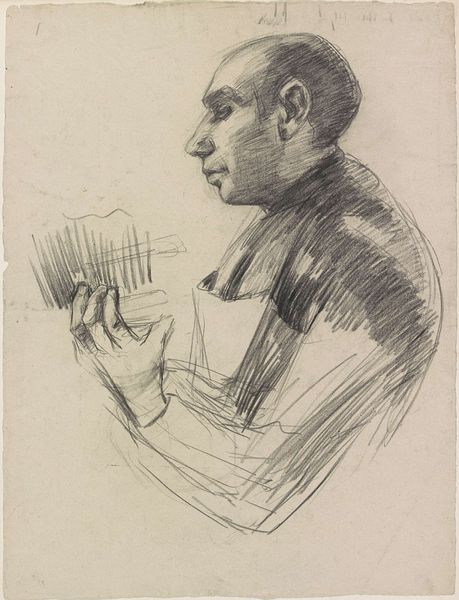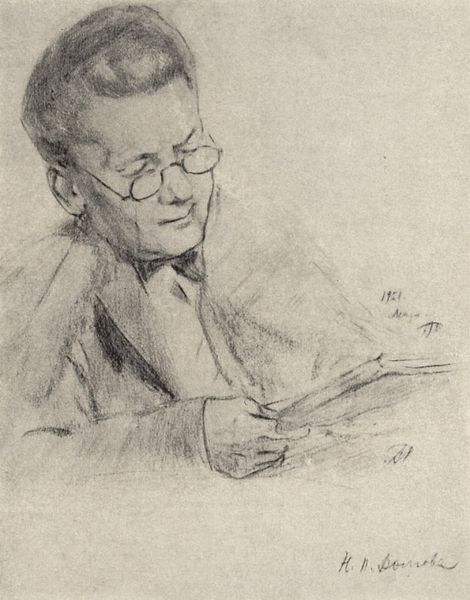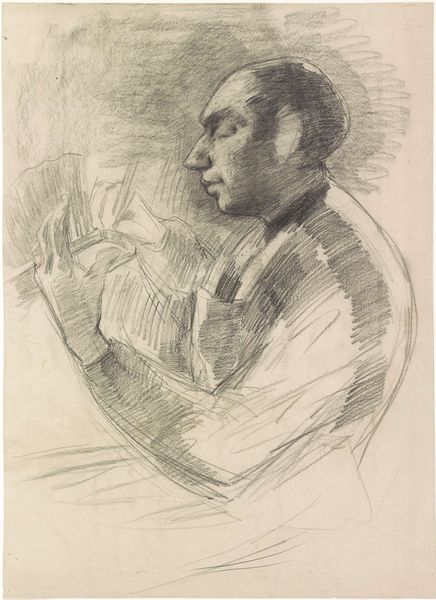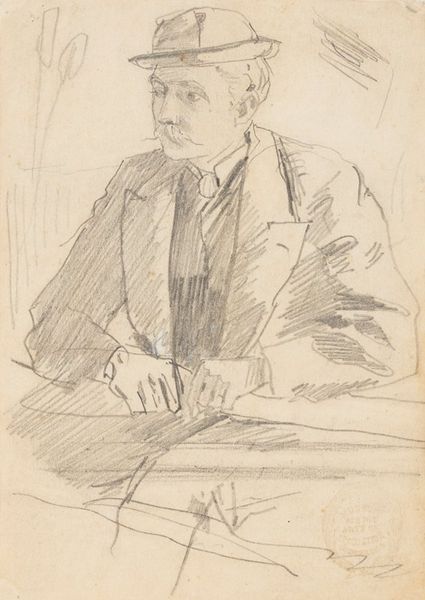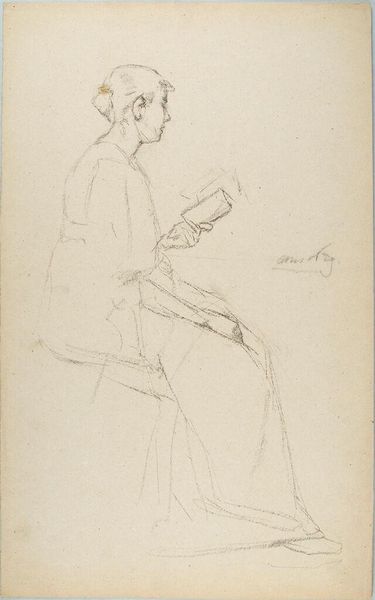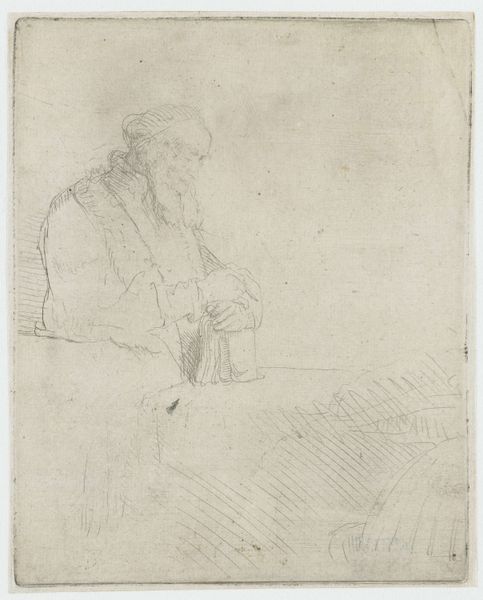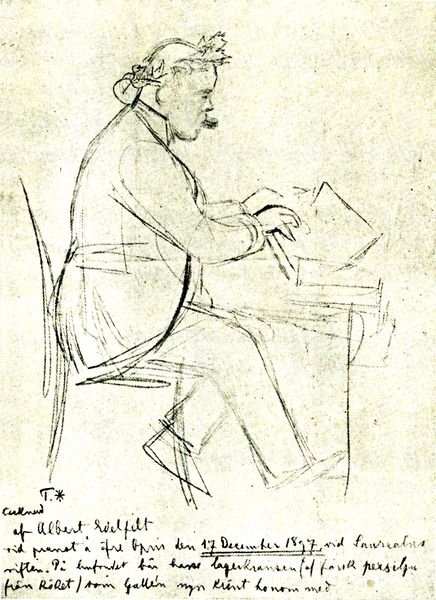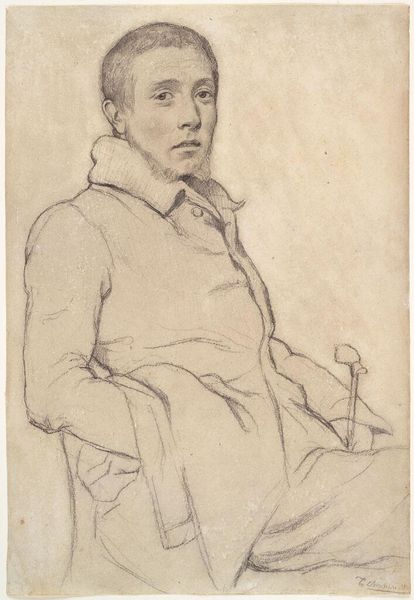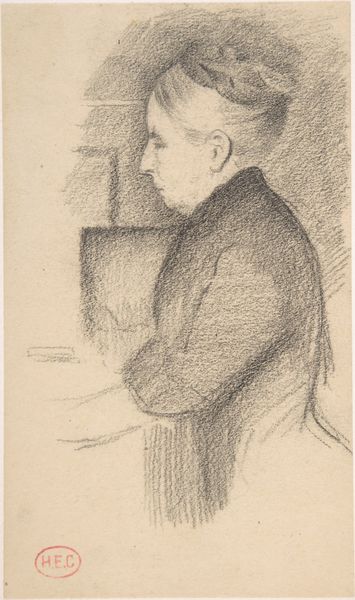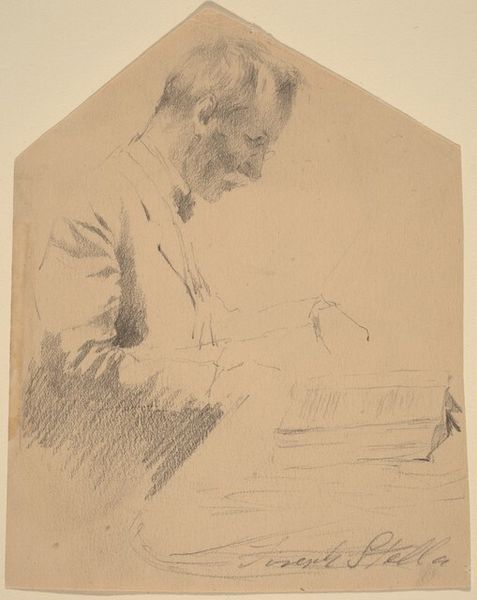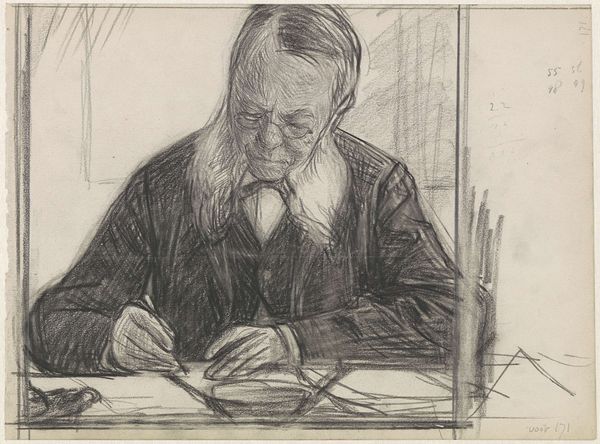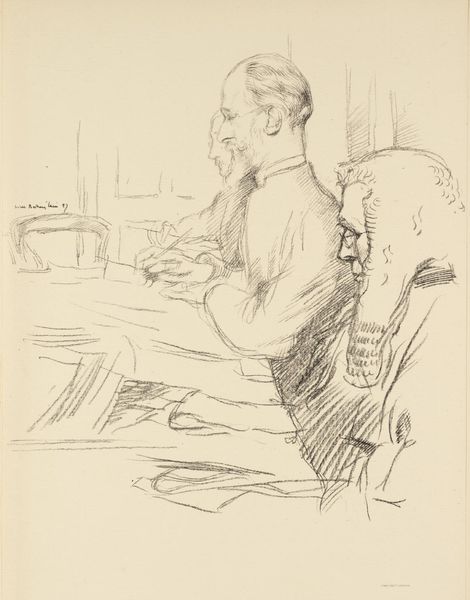
drawing, pencil
#
portrait
#
pencil drawn
#
drawing
#
pencil sketch
#
pencil
#
russian-avant-garde
Copyright: Public domain
Editor: This is Boris Kustodiev's 1900 pencil drawing, "Portrait of D.S. Stelletsky at work." The sketch feels intimate, almost voyeuristic, like a glimpse into the private world of creation. What stands out to you in this piece? Curator: I'm struck by the image of the artist, Stelletsky, deeply engrossed in his craft. Kustodiev captures not just a likeness but the very act of creation, reflecting the complex social dynamics within artistic communities. Notice how the loose pencil strokes convey movement, the energy of Stelletsky's work. How might Stelletsky’s work as a sculptor, a traditionally masculine field, intersect with questions of artistic labor and gender at the turn of the century? Editor: That's a compelling point! I hadn't considered the gendered aspect of sculpture at that time. Curator: The Russian avant-garde wasn’t simply about aesthetics, it was also a vehicle for radical social and political expression. This portrait, created on the cusp of enormous social upheaval, may also speak to broader discussions around artistic responsibility and the role of art within political movements. Does the somewhat unfinished quality of the drawing invite you to consider the process, rather than the final product, as the locus of artistic meaning? Editor: It does, actually. I was initially drawn to the simplicity, but understanding its place in this historical and cultural context gives it so much more depth. Thanks! Curator: Absolutely! Context is key when looking at works like this, especially concerning lesser-known artists. This approach gives insight into the personal, social, and political.
Comments
No comments
Be the first to comment and join the conversation on the ultimate creative platform.
